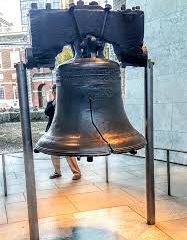The Rise and Significance of Wetherspoons in the UK Pub Scene
Introduction
Wetherspoons, formally known as JD Wetherspoon plc, has become an iconic name in the UK pub industry. Founded in 1979 by Tim Martin, the chain has now grown to operate over 900 pubs across the United Kingdom and Ireland. The relevance of Wetherspoons extends beyond its impressive number of establishments; it serves as a key player in the hospitality sector, particularly through its commitment to affordable pricing and a varied menu. With the ongoing recovery from the pandemic, understanding Wetherspoons’ strategies and challenges offers insight into the health of the pub industry.
Recent Developments
As of 2023, Wetherspoons has faced challenges that reflect broader trends in the hospitality sector. The company reported a decrease in footfall earlier in the year as customers continued to exhibit caution post-pandemic. However, in recent months, the chain has seen a modest recovery attributed to an increase in socialising as restrictions have eased. The introduction of themed nights and an expanded drink offering has aimed to entice a younger demographic, particularly students and those in urban areas.
In addition, Wetherspoons has been innovative in their approach by embracing technology. The adoption of app-based ordering systems has streamlined service and improved customer experience. Furthermore, Wetherspoons has initiated collaborations with local suppliers to enhance their food menu, ensuring that they remain competitive and relevant in an evolving market.
The Economic Impact of Wetherspoons
Wetherspoons plays a significant role in the UK economy. With thousands of employees, it not only provides jobs but also contributes to the local economies where its pubs are located. Many of its establishments have become social hubs, fostering community engagement.
Moreover, the company’s pricing strategy, which generally features lower-cost alternatives compared to independent pubs, has sparked discussions regarding the sustainability of small businesses operating in the same space. Critics argue that the model encourages cheap drinking, while supporters point to its accessibility for groups and individuals who may otherwise not afford to go out.
Conclusion
Looking ahead, Wetherspoons is expected to continue adapting to market demands while navigating ongoing economic challenges, such as inflation and changes in consumer behaviour. The brand’s resilience has shown its ability to bounce back from setbacks, but how quickly it can maintain its growth amid the changing landscape of the pub industry remains to be seen. For patrons and potential investors alike, Wetherspoons serves as a case study of adaptation and innovation within the ever-competitive hospitality sector.









